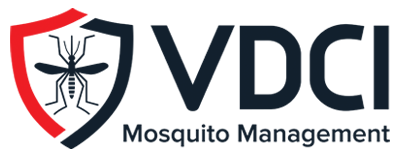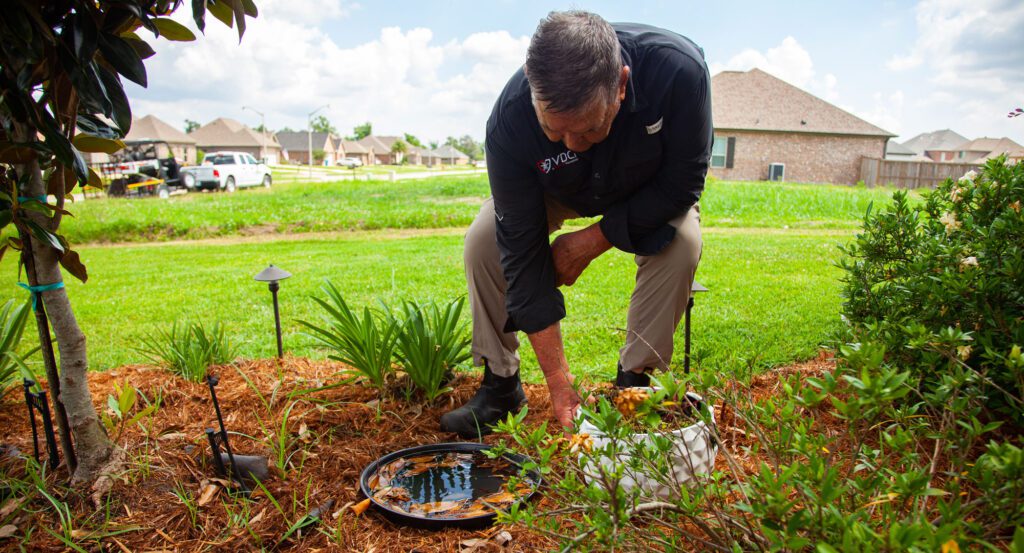Mosquito surveillance is the cornerstone of a quality integrated mosquito management (IMM) program. VDCI’s trained entomologists are experienced in all methods of larval and adult mosquito surveillance and identification. Larval mosquito surveillance programs allows us to identify and treat breeding sites, often eliminating the problem before adult mosquitoes appear. Adult mosquito surveillance is the process of understanding the population dynamics and species distribution of adult mosquitoes in a given area. This is a critical factor in determining how to control mosquitoes and whether there is a disease risk in your community.
Identifying Breeding Sites Through Larval Mosquito Surveillance
Water sources within a community can provide breeding sites for mosquitoes. Depending on the species, larval habitats can be discovered in the stagnant water at the local pond, faulty drainage sites by main roads, or discarded tires at the back of a local business or home. By inspecting breeding sites and providing knowledge to decision-makers, a community can determine if targeted action should be considered. Once a target need is determined, our team provides mapping and reports to capture source reduction as well as control efforts completed.
Mosquito Surveillance Traps: Collecting Mosquitoes and Adult Surveillance
Adult mosquito surveillance includes the weekly trapping of adult mosquitoes by dividing a program area such as a city, county, or industrial facility into control zones. When it comes to mosquito surveillance equipment for adult mosquitoes, there are several types of adult mosquito surveillance traps used in effective mosquito surveillance programs, each with its own advantages, depending upon what specific information is desired.
New Jersey Light Trap

The New Jersey light trap is a generalized adult mosquito surveillance trap that is designed to capture a broad spectrum of mosquito species. This particular mosquito collection device is meant for a more permanent trap location as it needs to be firmly mounted about 5-6 feet above the ground and powered by an outlet. Nuisance mosquito control programs, in particular, may benefit from having a well-placed New Jersey light trap.
CDC Light Trap
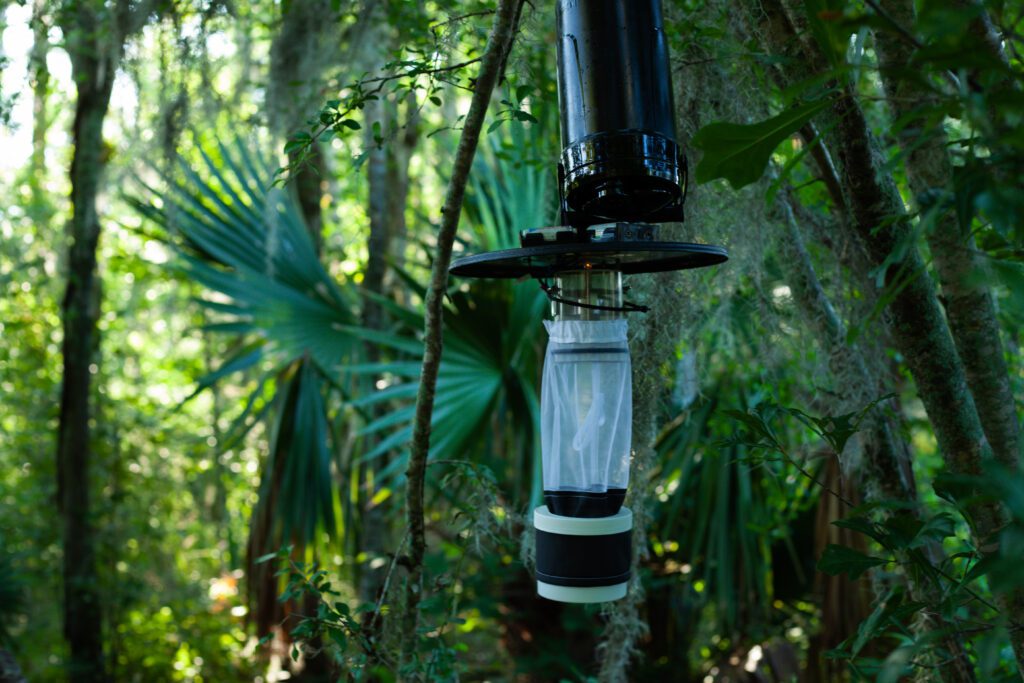
CDC light traps are an industry-standard in adult mosquito surveillance. CDC traps are portable and can be utilized in a variety of ways but the most common model is accompanied by a small light and a carbon dioxide (CO2) bait source. The flow of CO2 emanating from the trap will lure adult mosquitoes by simulating the exhaled respiratory gases of birds or mammals.
Gravid Trap
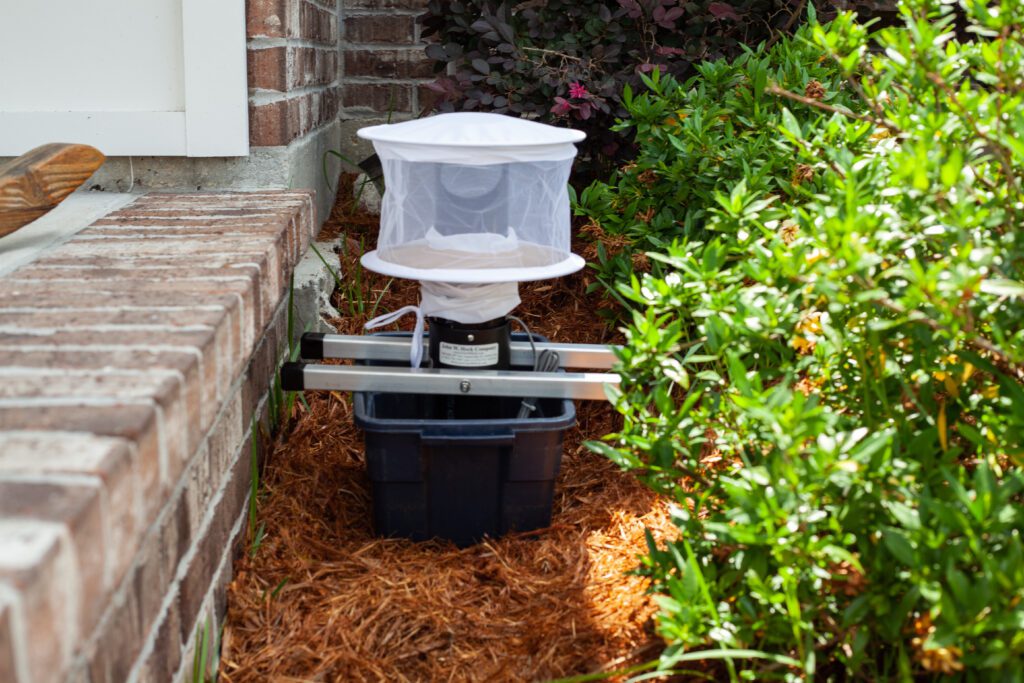
Gravid traps are designed to catch Culex species, such as Culex tarsalis or Culex pipiens, that are capable of transmitting West Nile virus, St. Louis Encephalitis, and both Western and Eastern Equine Encephalitis. Culex mosquitoes are attracted to the trap by the stagnant water placed under a battery-powered fan which blows mosquitoes into a collection container. The water contains a solution of organic material, often grass or hay, that has been left to sit for several days or longer and serves as an attractant to the Culex species by mimicking naturally occurring stagnant water.
BG-Sentinel Trap
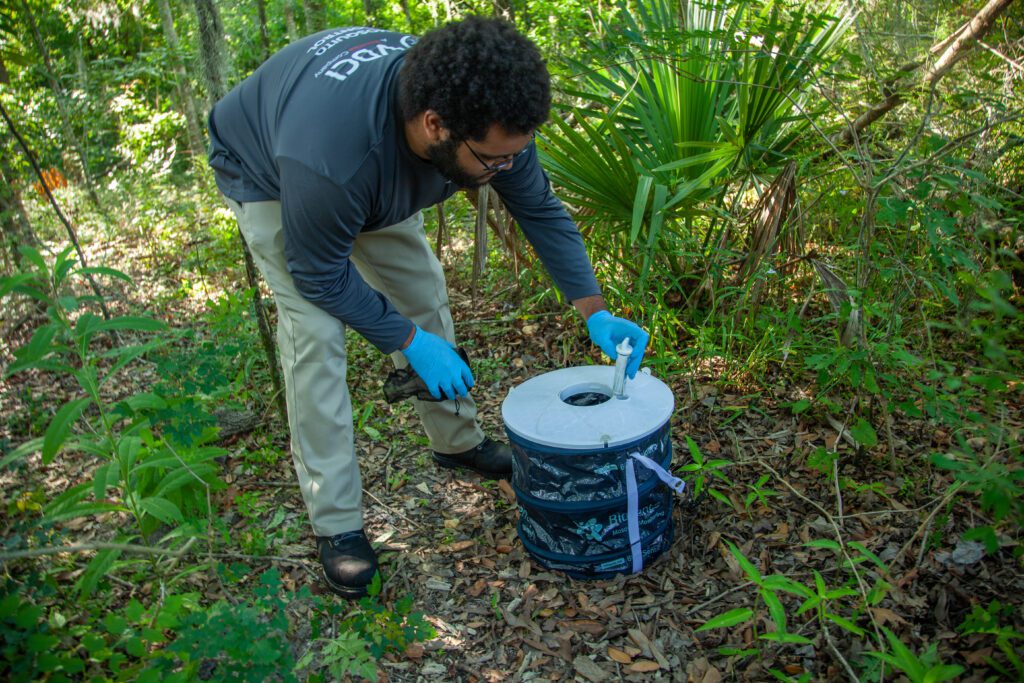
The BG-Sentinel trap was designed with two specific mosquito species in mind, Aedes albopictus and Aedes aegypti. The two species are known to vector dengue, chikungunya, Zika, and yellow fever viruses and thrive in urban environments. Both species use natural and artificial containers for breeding, making them notoriously difficult to catch in significant numbers. The BG-Sentinel trap is made of a tarp-like material, about the size of a 5-gallon bucket, and utilizes an attractant such as Octenol lure, human scent lure, or carbon dioxide. A funnel located at the top of the trap leads mosquitoes to an electric fan that pulls them into a collection net.
Laboratory Identification and Analysis of Adult Mosquitoes
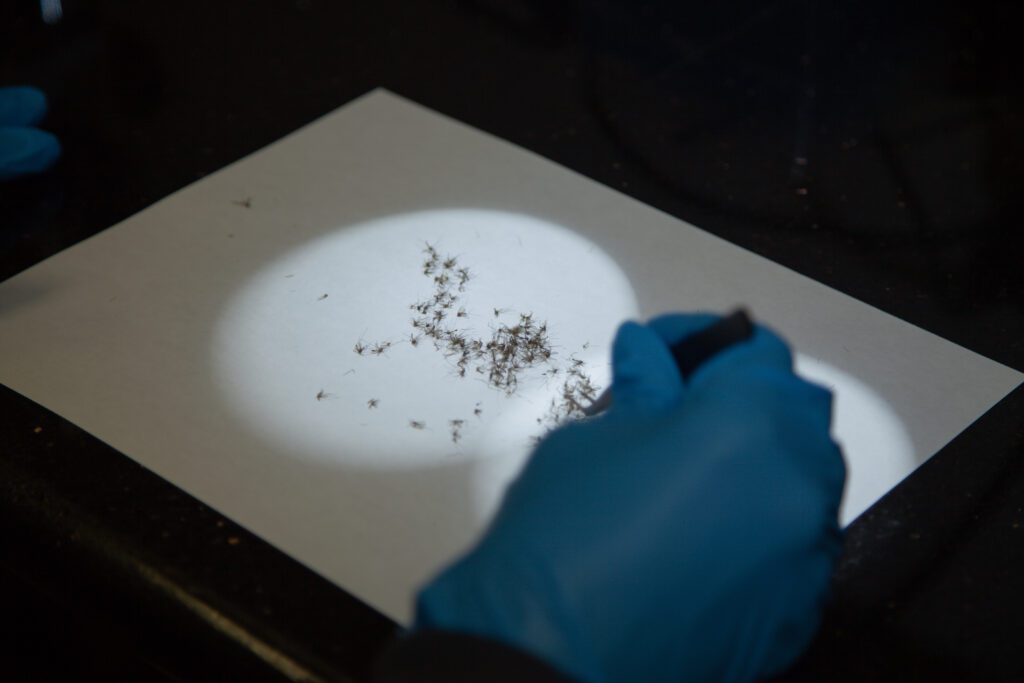
Trapping is an important mosquito surveillance tool, but those mosquitoes must then be analyzed in the lab by experts. The successful collection of adult mosquitoes provides insight into population levels as well as allows our team to properly identify species in a given area. Our entomologists are among the most knowledgeable in the industry and VDCI works diligently to ensure that all of our technicians are thoroughly trained in every aspect of mosquito biology. Correctly identifying species and having knowledge of their bionomics provides insight into desired breeding habitats, active periods during the day/night, host preferences, and maybe most importantly, which mosquito-borne diseases they can transmit. Additionally, understanding population levels can determine the severity of a nuisance mosquito outbreak. Collection, counting, and identification all aid in determining which abatement solutions should be employed to reduce the health risk to a community.
Mosquito-Borne Disease Detection and Data Reporting

Testing for mosquito-borne diseases is one of the most important reasons for implementing a comprehensive mosquito surveillance program. In most cases, the diseases that mosquitoes can transmit to humans and animals can be detected in the mosquitoes themselves, weeks before they can be passed on, which gives experts the opportunity to take all of the appropriate control actions in order to reduce the risk of human disease transmission. We communicate these results to all appropriate local and state health departments. In addition, we track disease levels in neighboring locations as a means of further understanding potential risks in your community and providing essential information to protect citizens.
It is highly recommended that any municipality or large industrial operation conduct a comprehensive mosquito surveillance program as the first step towards protecting the public health of its citizens or employees. The experienced team at Vector Disease Control International (VDCI) has the mosquito surveillance tools and experience to collect and analyze several hundred thousand mosquitoes every year for cities, counties, districts, and companies across the United States and abroad. VDCI has the experience, necessary mosquito surveillance equipment, industry-leading technologies, and capabilities to handle all of your mosquito surveillance and disease monitoring needs.
Government Partners in Mosquito Management: Contact Us Today
Mosquito surveillance is an important component of an integrated mosquito management program. Our team of mosquito management experts take pride in partnering with municipalities, mosquito abatement districts, county, and state entities and are here to help guide you in delivering environmentally-conscious and cost-effective mosquito management.
Complete the form below or call 800-413-4445 to connect with a mosquito surveillance expert.

